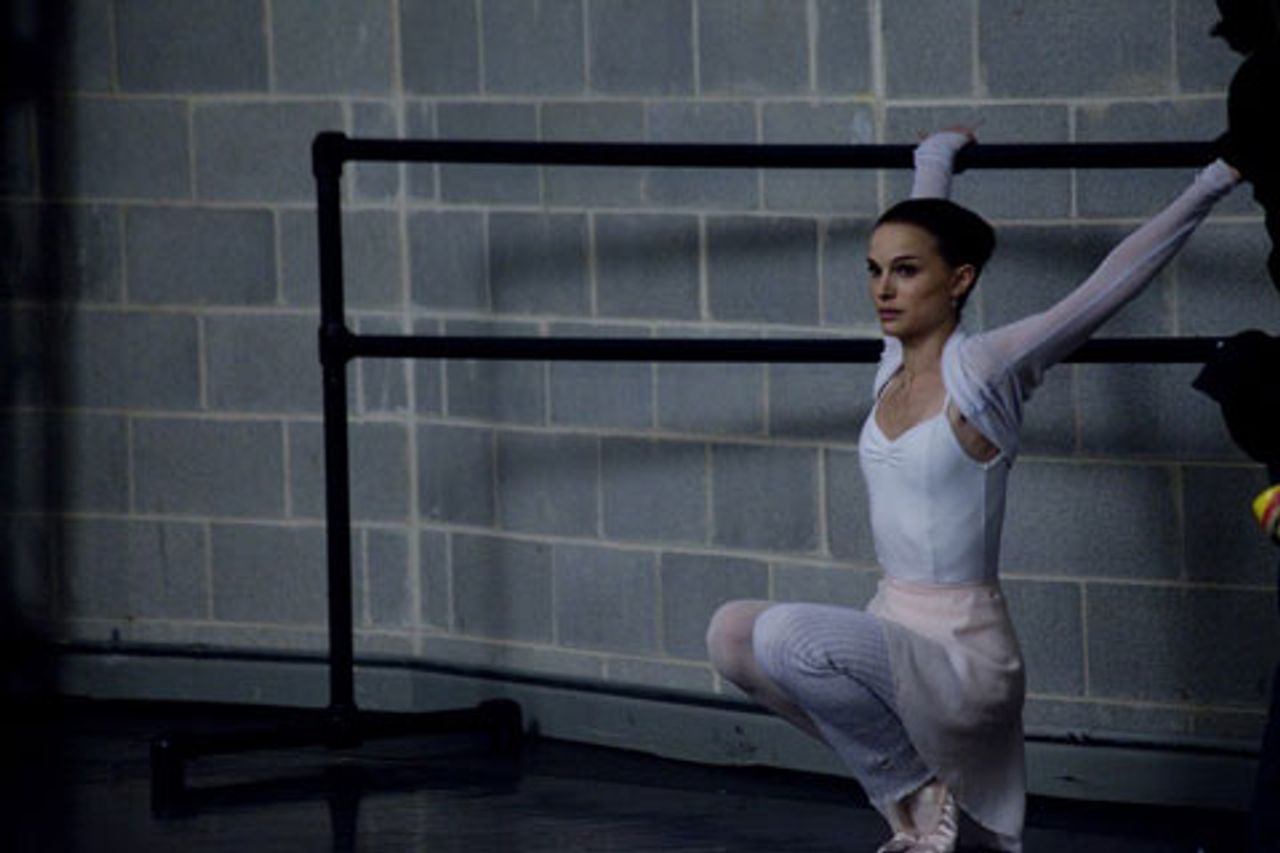 Black Swan
Black SwanIn Michael Haneke’s La Pianiste (2001), Erika Kohut (Isabelle Huppert), a repressed music professor, torments her students in an effort to come to terms with her own elusive artistic success. The context the filmmaker meticulously establishes is of a self-brutalizing bourgeois who has impossible-to-fulfill demands and expectations from love, art, competition, the “rules of the game” of middle-class courtship and romance, and also faces the problem of generating a feasible livelihood out of the artistic profession.
In Haneke’s film, the artist’s self-destructive impulses are given clinical detail and lucidity; the horror is stark, and no less deeply explored. A palpable, social world is established, one of contradictory urges arising from the prevalent conditions of the time.
The film is an appropriate precursor to Darren Aronofsky’s Black Swan. Both films deal with themes of the agonized artist who must confront the results of an untenable ambition (both directors also raise questions of how filmmakers in general are to deal with violence).
Black Swan closes the decade by re-designing tropes explored by filmmakers throughout the millennium. In My Skin by Marina De Van (2002), the David Lynch films Mulholland Drive (2001) and Inland Empire (2006), and much of the work of Catherine Breillat, Fat Girl (2001), Romance (1999), and Anatomy of Hell (2004), come to mind.
Aronofsky’s film follows Nina (Natalie Portman), a young ballerina living on Manhattan’s Upper West Side with her demanding mother (Barbara Hershey), a former ballerina herself. Nina aspires to the leading role in a New York City ballet production of Tchaikovsky’s “Swan Lake.” Although she seems to be plagued by a lack of “passion,” her technical skills give her a fair chance at landing the role.
Various young girls vie for the position; an atmosphere of tension and jealousy begins to take its toll on the sensitive Nina. She rapidly deteriorates into paranoid fantasies of revenge, murder, and other forms of mayhem, in order to incarnate, or exorcise, the Black Swan within her.
Aronofsky’s well-established fashion (in Requiem for a Dream, The Wrestler, Pi) is to work at desensitizing and shocking an audience with intense and graphic imagery, moments of gore and mercilessness. Black Swan too contains lurid scenes of self-mutilation, competition-driven homicide and other unpleasant cruelties. To what end, however?
Pushed to the far corners of the stage in Black Swan, with the audience left mostly to its own devices, are the following problems: the artist’s relationship to others within the larger social framework; the larger social framework itself; and the artist’s material conditions and how they directly affect his or her psyche, social life, regimen, sense of focus, and accomplishments.
Furthermore, largely untreated in all the goings-on are the issues of where the artist derives definitions of success and failure; what kind of social and artistic system creates the cut-throat competition that figures so prominently in the film; the question as to whether there is an alternative—besides suicide or murder!—that the artist might pursue to come to terms with the damage caused by the limitless demands of commerce and ambition; and a serious look at the character of commerce within the profession as a whole.
Black Swan moves at a swift, pleasing pace; very little is dwelled upon for long. One sometimes senses the camera’s urge to take flight to the next scene as quickly as it has set foot on solid ground; there is an overall “forward” feel of movement that mimics and is successfully integrated with the ballet to considerable effect. Portman is able to alternate seamlessly between extremes. The effortless work of Vincent Cassel, who plays her instructor, is particularly winning.
The logic of fantasy wryly blends the everyday world of the film with the universe within “Swan Lake,” and it becomes increasingly difficult to discern what is real or imagined. The quandaries of the protagonist, as she veers from insecurity and self-questioning toward inflicting physical damage on herself and even greater tragedy, are represented by vibrant, fanciful scenes of imagined mutations. Portman’s Nina envisions herself literally turning into the swan—black feathers protrude from pores in the skin, bones crack painfully in impossible, painful contortions.
These are the best moments in the film; they evoke, and communicate with a flourish, at least, what an artist must decide to sacrifice. But deeper, more serious questions could have been asked. A questioning critique of the artistic process, and of the conditions that contribute and ultimately define it, is lacking. We are primarily left with a straightforward, briskly paced fantasia of an idealized “artiste” who sees death as the only option out of a life of brutal competition. The systems that define those values remain, largely untreated, as only vague, haunting specters.
